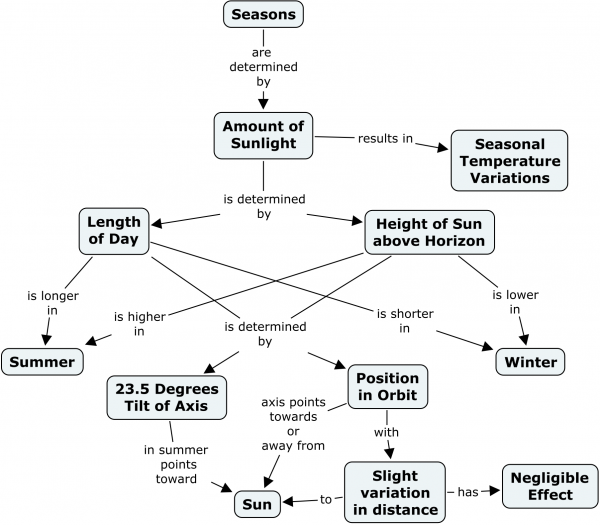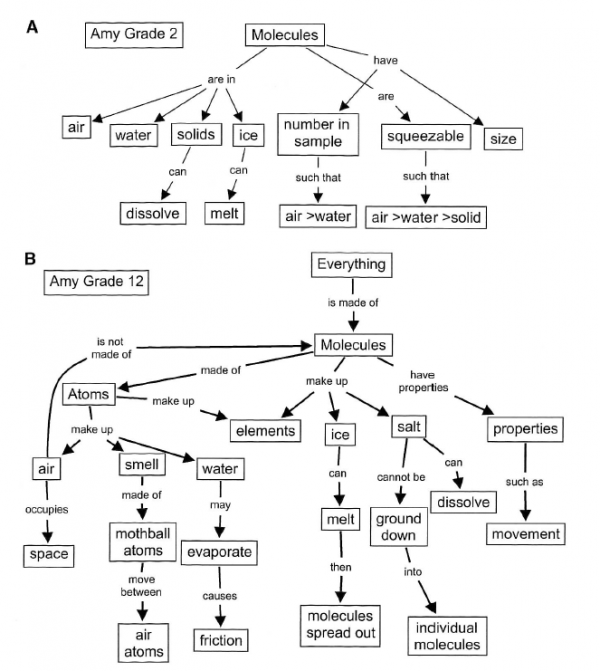Concept Maps
From Sustainability Methods
Revision as of 10:01, 15 July 2021 by Christopher Franz (talk | contribs) (Created page with "{|class="wikitable" style="text-align: center; width: 100%" ! colspan = "4" | Type !! colspan = "4" | Team Size |- | '''Collaborative Tools''...")
| Type | Team Size | ||||||
|---|---|---|---|---|---|---|---|
| Collaborative Tools | Software | Personal Skills | Productivity Tools | 1 | 2-10 | 11-30 | 30+ |
What, Why & When
Concept Maps are a form of visually organizing information for groups and individuals. Conceptual terms or short statements are presented in boxes or bubbles and interlinked with other terms through commented arrows, resulting in a hierarchical network-like structure that provides an overview on a topic.
Goals
- Organize conceptual knowledge in a visual form to identify learning processes and knowledge gaps.
- Create new knowledge, ideas and solutions by arranging information in a structured manner around a focus question, topic, or problem.
Getting started
- Concept Maps result from the work of Joseph Novak and colleagues at Cornell University in the 1970s in the field of education, and have since been applied in this area and beyond. The original underlying idea was to analyze how children learn, assuming that they do so by assimilating new concepts and positioning these in a cognitive conceptual framework. The idea of Concept Maps emerged from the demand for a form of assessing these conceptual understandings.
- Importantly, while Concept Maps are often applied in research, teaching or planning, they should not be confused with the methodological mixed methods approach of Group Concept Mapping. The latter emerged based on Concept Maps in the 1980s, but is a more structured, multi-step process.
- A Concept Map further differs from a Mindmap in that the latter are spontaneous, unstructured visualisations of ideas and information around one central topic, without a hierarchy or linguistic homogeneity, and do not necessarily include labeled information on how conceptual elements relate to each other.

An example for a Concept Map on the knowledge structure required for understanding why we have seasons. . Source: Novak & Cañas 2008, Cmap
- Concept Maps are help identify a current state of knowledge and show gaps within this knowledge, e.g. a lack of understanding on which elements are of importance to a question or topic, and how concepts are interrelated. Identifying these gaps helps fill knowledge gaps. Therefore, they can be a helpful tool for students or anyone learning a new topic to monitor one's own progress and understanding of the topic, and how this changes as learning units continue.
- Further, Concept Maps can be a way of approaching a specific question or problem and support a systematic solution-development process. The visual representation of all relevant elements nconcerning a specific topic can thus help create new knowledge.
- There are even more imaginable purposes of the approach, including management and planning, creative idea-generation and more.

This example from Novak (2016, p.178) shows how a student's conceptual understanding of a topic develops over time. It illustrates how Concept Maps can help identify knowledge gaps or flaws (which are existent still in the map below), how much (and what kind of) learning process was made over time, and what to focus on in future learning. Source: Novak 2016, p.178.
Step by step
- When learning to work with Concept Maps, Novak & Canas (2008) recommend to start with a domain of knowledge that one is familiar with. Here, the learner should focus on a specific focus question and/or text item, activity, or problem to structure the presented elements and hierarchies around, and to contextualize the map by. As the authors highlight, often, "learners tend to deviate from the focus question and build a concept map that may be related to the domain, but which does not answer the question. It is often stated that the first step to learning about something is to ask the right questions".
- After defining the domain of knowledge and focus question or problem, 15-25 key concepts should be identified and ranked according to their specificity. In a concept map, more general, broad concepts are on the top of the map, while more specific concepts are found below, resulting in a hierarchy from top to bottom. So the concepts should be ordered accordingly in a list first.
Links & Further reading
The author of this entry is Christopher Franz.